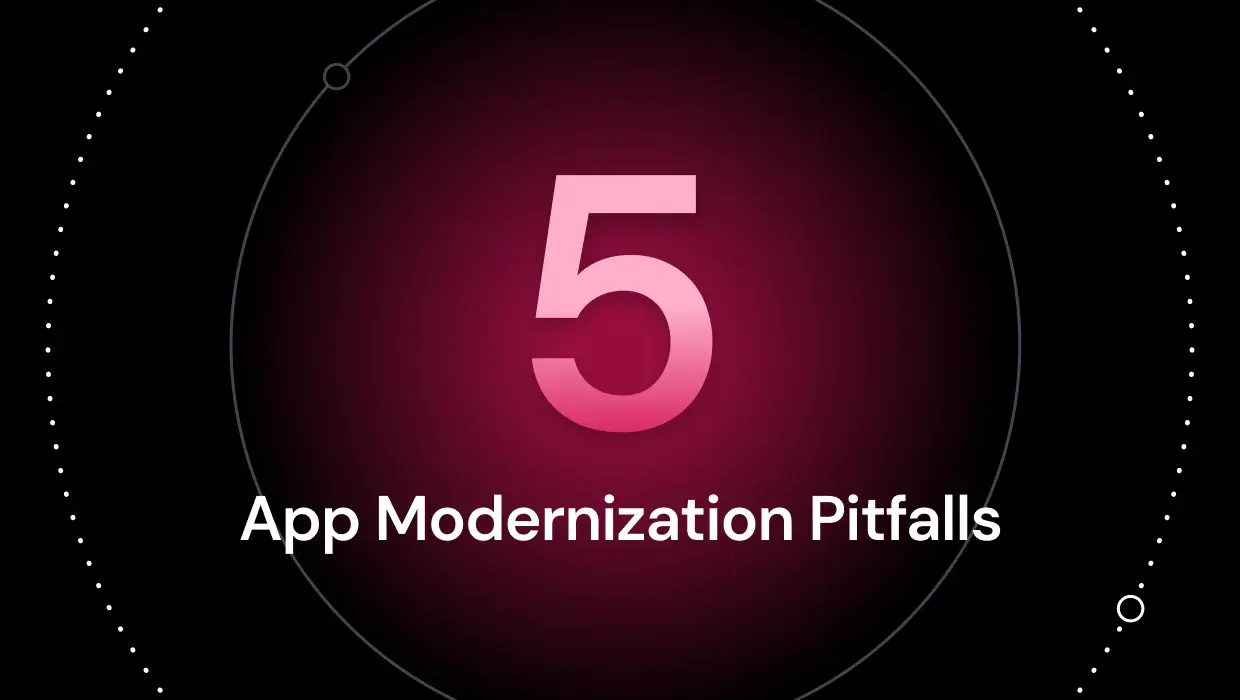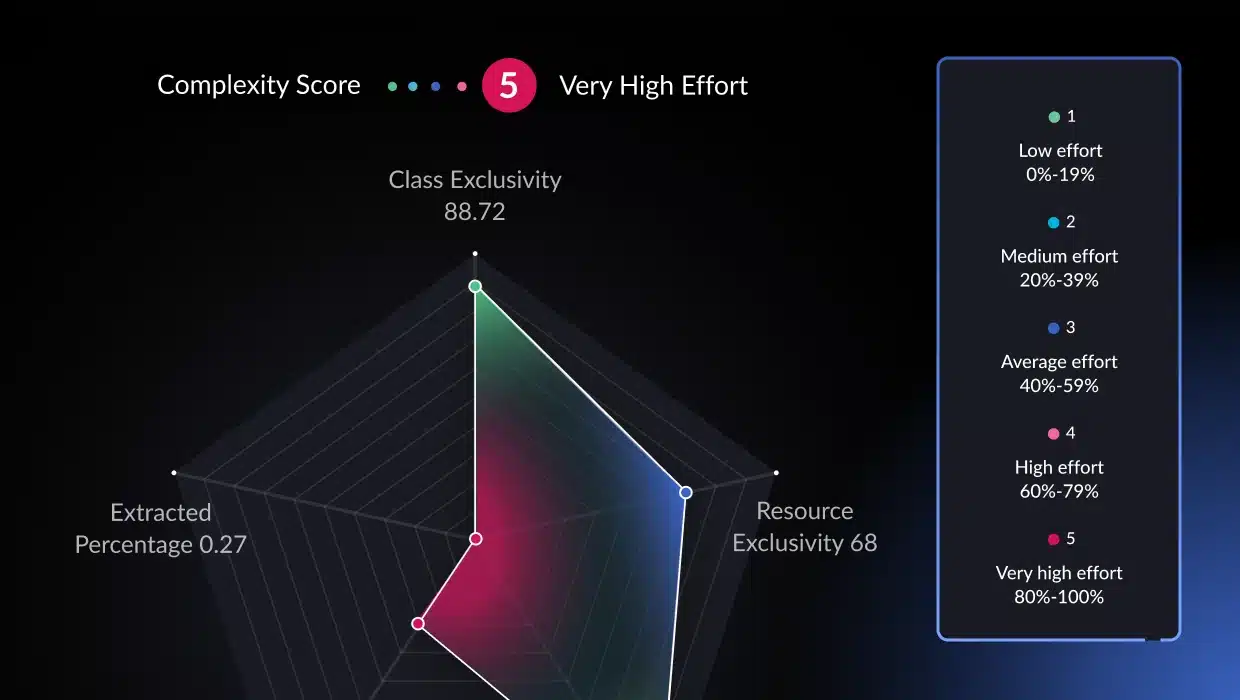To keep pace in their marketplace, many businesses today are attempting to modernize their business and the legacy apps they depend on by moving them to the cloud. But experience has shown that migrating workloads requires a structured framework to guide developers and IT staffers in this new environment. That’s what the cloud center of excellence (CCOE) is all about. According to Gartner, a CCOE is the optimal way to ensure cloud success.
Simply lifting and shifting legacy software as-is to the cloud still leaves you with a monolith and merely changes the location of your problem. Most legacy apps can run fine in the cloud but can’t take advantage of today’s cloud native ecosystem and managed services, and moving them unchanged to the cloud does little to fix their issues. That’s why application modernization, which restructures apps to give them cloud-native capabilities, must be an essential component of any sound cloud strategy.
Application modernization can itself be a complex and difficult process: the historical failure rate for such projects is 74%. But by incorporating a specific application modernization focus into your CCOE, you can avoid common pitfalls, enforce best practices, and lay a firm foundation for success.
What Is a Cloud Center of Excellence?
Amazon Web Services (AWS) offers a good definition of a CCOE:
“A Cloud Center of Excellence (CCoE) is a cross-functional team of people responsible for developing and managing the cloud strategy, governance, and best practices that the rest of the organization can leverage to transform the business using the cloud.”
The cloud center of excellence guides the entire organization in developing and executing its approach to the cloud. According to the AWS definition, the CCOE has three main responsibilities:
1. Cloud strategy
Your cloud strategy outlines the general approach, ground rules, and tools your organization will use in moving software and workflows to the cloud. It defines the business outcomes you want to achieve and establishes the technical standards and guidelines you’ll follow, taking into account issues such as costs vs benefits, risks, organizational capabilities, and legal or compliance requirements.
2. Governance
Red Hat defines cloud governance as “the process of defining, implementing, and monitoring a framework of policies that guides an organization’s cloud operations.” A governance regime will include specific rules and guidelines that aim at minimizing complexity and risk by defining how individuals and teams in your organization use cloud resources.
3. Best practices
Cloud best practices often differ substantially from those developed in on-site data centers. So, a fundamental part of a CCOE’s responsibility is to introduce developers and IT staffers to practices that are optimized for the cloud environment.
The Importance of Application Modernization
Because today’s market environment is highly dynamic, companies must be able to quickly respond to changes in customer requirements or other aspects of the competitive landscape. But legacy software, by its very nature, is difficult to adapt to meet new requirements.
Legacy apps are typically monolithic in structure (the codebase is organized as a single unit of perhaps millions of lines of code with complex dependencies interwoven throughout). As a result, such apps are usually hard for modern developers to understand and can be so brittle that even small changes might introduce downstream issues that bring the entire system to a screeching halt.
Plus, because these older apps were normally designed to operate as a closed system, integrating them into modern interdependent cloud managed services can be difficult and complex.
But many organizations still depend on these technologically ancient apps for some of their most business-critical processing, so they can’t simply be retired. The alternative is to modernize them by refactoring the monolithic code into a cloud-native, microservices architecture.
The effect of that kind of modernization (as contrasted with simply moving apps to the cloud with little change) is to give you a suite of re-architected applications that, while maintaining continuity for users, have the flexibility to be easily updated to meet new business requirements.
Why App Modernization Should Be a Core Competency of Your CCOE
Your cloud center of excellence should be your organization’s acknowledged authority on all things cloud. And application modernization is all about restructuring your legacy apps so that they can integrate smoothly into the cloud ecosystem.
Related: Why Modernize Legacy Applications?
Refactoring legacy apps to a cloud-native architecture is an inherently complex process that demands a high degree of expertise in architecture, design, cloud technology and operations. That’s why it’s critical that your CCOE also function as an MCOE (modernization center of excellence). Otherwise, your modernization efforts are very likely to struggle, and you stand a good chance of adding a percentage point or two to that 74% of app modernization projects that fail to meet their goals.
Not only will your CCOE/MCOE provide the fundamental cloud-related technical expertise and guidelines that underpin any successful effort to translate workflows to the cloud, but it must also help reshape your entire IT organization to fit the technological and operational requirements of the cloud environment.
For example, when a company’s modernization efforts lack the guidance and governance that an MCOE should provide, the organization is very likely to run afoul of Conway’s Law. This maxim, formulated in 1967 by software expert Melvin Conway, declares that:
Any organization that designs a system (defined broadly) will produce a design whose structure is a copy of the organization’s communication structure.
The practical effect of Conway’s Law is that to be effective, your modernization teams must be restructured to reflect a whole new set of technological and organizational imperatives imposed by the cloud environment. In other words, to successfully refactor legacy apps to a microservices architecture you should reorganize your development teams based on the way cloud-based microservices work. Neglecting to restructure your development organization based on specific cloud-native technological patterns is an almost sure recipe for failure. As software engineer Alex Kondov so graphically puts it:
“You can’t fight Conway’s Law… Time and time again, when a company decides that it doesn’t apply to them they learn a hard lesson… If the company’s structure doesn’t change, the software will slowly evolve into something that mirrors it.”
Reshaping your entire IT operation (and by extension your organization as a whole) should not be undertaken lightly. It should only be done based upon authoritative guidance provided by a team that has an acknowledged depth of experience and expertise; in other words, a well-established and respected CCOE/MCOE.
Implementing a CCOE/MCOE is an Emerging Best Practice for Successful Companies
Today more and more companies are recognizing the critical necessity of having an effective CCOE/MCOE organization to guide their modernization efforts.
For example, an IDC report relates the experience of a large logistics company that failed three times in its efforts to move applications and workflows to the cloud. But it succeeded on its fourth attempt “when it created a multi-persona cloud center of excellence team responsible for architecture, automation, governance, operations, and unified delivery model.”
This experience is far from unique—other well-known companies, such as Dow Jones, have reported similar success stories. So, it’s not surprising that in a 2022 survey of corporate cloud infrastructure stakeholders an impressive 90% of respondents said they either have or plan to institute a cloud center of excellence. According to Computerworld, 64% of SMBs (small and medium-sized businesses) have already implemented CCOE-like teams.
Next Steps: Create or Upgrade Your MCOE
Ideally, you should have a CCOE/MCOE organization in place from the very beginning of your company’s modernization journey. But even if you’ve already started without an MCOE, it’s critical for long-term success that you initiate one as soon as possible.
If you already have an established CCOE/MCOE, you’ll want to focus on ensuring that it has the requisite skills, expertise, experience, mandate, and perhaps most important, management backing to provide authoritative leadership for your organization.
Related: Common Pitfalls of App Modernization Projects
If, on the other hand, you have not yet instituted an MCOE (or an MCOE focus within your CCOE), now’s the time to put one in place. But how do you get started?
Getting Started
Whether you’re starting or upgrading your CCOE/MCOE, there are a couple of essential steps you should take.
The first and most important step is to ensure that your company’s executive management is visibly committed to the program. The CCOE/MCOE team will not only require budget and staffing resources, but must also have clear authority to set and enforce uniform technical and operational guidelines that apply to all cloud and modernization initiatives across the organization.
Then you must assemble and train your team, ensuring that it either has or can tap into the highest levels of cloud-related technical skills. Remember that your CCOE/MCOE team must not only be able to provide authoritative guidance concerning industry-wide technical best practices, but must do so within the context of your organization’s unique culture, goals, and cloud strategy.
But if your company is like most, you’re likely to discover that your in-house staff simply doesn’t possess all the experience and skills required to build a CCOE/MCOE that can be effective at providing expert cloud guidance and governance companywide. The best way to ensure that your team can tap into all the technical skills and tools it needs is to partner with another company that specializes in cloud and modernization technologies.
vFunction not only offers industry-leading experience and expertise in cloud-based application modernization, but also provides an advanced, automated modernization platform that can deliver data-based assessments of the modernization requirements of your legacy apps, and then substantially automate the process of refactoring those apps into microservices.
If you’re ready to take the next step in creating or upgrading your CCOE/MCOE team, vFunction can help. Please contact us today.






